It is October 1st, which means we are kicking off National Substance Use Prevention month.
What is prevention? To tell you the truth, I never really put much thought into substance use, or substance use prevention before I started working with Breakwater in January 2020. I wasn’t blind to substance use, my background is in prehospital emergency medicine and I’ve responded to more than my fair share of overdoses and incapacitated individuals over the years. LIke most of us, I have friends and family who struggled with substance use and everything that goes along with it. Growing up alcohol was a household staple with our beer fridge in the basement and our liquor cabinet in the kitchen, cocktails the first course at restaurant outings. Even now, as I write this post from my kitchen table there is alcohol within a few steps of where I sit.
Since starting this role in January and learning about the prevention work Breakwater and other coalitions around the country do, my level of awareness has grown and my perspective has changed quite a lot. And I’m not the only one. I’ve had conversations with several coalition members who were learning right alongside me about how they never really thought about the ease of access to alcohol in their homes. They didn’t think about how their relationship with alcohol can shape their child’s perception of alcohol or other drugs – or how they never really thought of having a real, honest conversation with their teens to find out what they know, think, hear, see or feel about drugs and alcohol. Growing up, I remember the “don’t drink or do drugs, or else” type of chats, if you could call them that. They were not effective, and they didn’t stop me, either.
So…what is prevention? What does it look like, and how do I do it? Here are the main take-aways I have gathered over the last 9 months of learning and diving into this work.
- Prevention can be big, and hard. It can mean volunteering time and attention to a community coalition to take an inventory of your community’s alcohol policy. It can mean working to reduce or cap the number of alcohol licenses in your area because more outlets means more alcohol related problems, even if all the outlets are following the rules. It can mean starting a conversation about why liquor stores were deemed an essential service during the Safer at Home Order when treatment and recovery services were not, and now overdoses and relapses are climbing across the nation.
- Prevention can be small. It can be talking to your kids about things you see and hear like the ‘NO LIMITS ON ALCOHOL’ signs as you walk into the grocery store liquor department while there are limits on actual household items like cleaning supplies and food items. It can be you asking your child what they think about the ‘legalize marijuana’ ads or billboards as you drive down the highway or watch television. It can be taking those 5 or 10 minutes in the car to ask them if they have any questions, and a willingness to look at your own behavior and understand how that shapes your child’s understanding of the world around them.
It takes a community; sign up for our newsletter, join in on a meeting, or reach out to learn how you can help.

Samantha is the Drug-Free Communities grant Coordinator for Breakwater.


